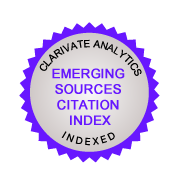STUDENTS’ PERCEPTIONS OF TEACHERS’ WRITTEN CORRECTIVE FEEDBACK IN THE MALAYSIAN ESL CLASSROOM
DOI:
https://doi.org/10.32890/mjli2020.17.2.4Keywords:
Second language (L2) pedagogy, written corrective feedback (WCF), second language acquisition (SLA), types of feedback, perception of feedbackAbstract
Purpose – This study examined the types of written corrective feedback provided to ESL students in writing classes in Malaysian secondary schools, and their perceptions towards the provision of written corrective feedback in the Malaysian context. Methodology – A survey questionnaire was administered randomly among 720 Form Four students from 10 secondary schools in Penang. The questionnaire was based on a Likert scale and responses were analysed using descriptive statistics. Findings – Results showed that most learners benefited from and preferred direct feedback, and tended to focus on form such as grammar, paragraph organisation, content and clarity of ideas. Students preferred this form of feedback as they were able to understand errors more clearly. It was found that most students were unable to self-regulate their own errors; a majority could not locate their own errors and had become passive learners within the Malaysian schooling system. Significance – The study is significant to Malaysian secondary schools in its effects, depicting the many forms of corrective feedback available in the ESL context that can be employed in school besides the popularized direct feedback used within the syllabus.Metrics
Metrics Loading ...
Additional Files
Published
31-07-2020
How to Cite
Ganapathy, M. N. G., Ai Lin, D. T., & Phan, J. (2020). STUDENTS’ PERCEPTIONS OF TEACHERS’ WRITTEN CORRECTIVE FEEDBACK IN THE MALAYSIAN ESL CLASSROOM. Malaysian Journal of Learning and Instruction, 17(2), 103–136. https://doi.org/10.32890/mjli2020.17.2.4
Issue
Section
Articles




























